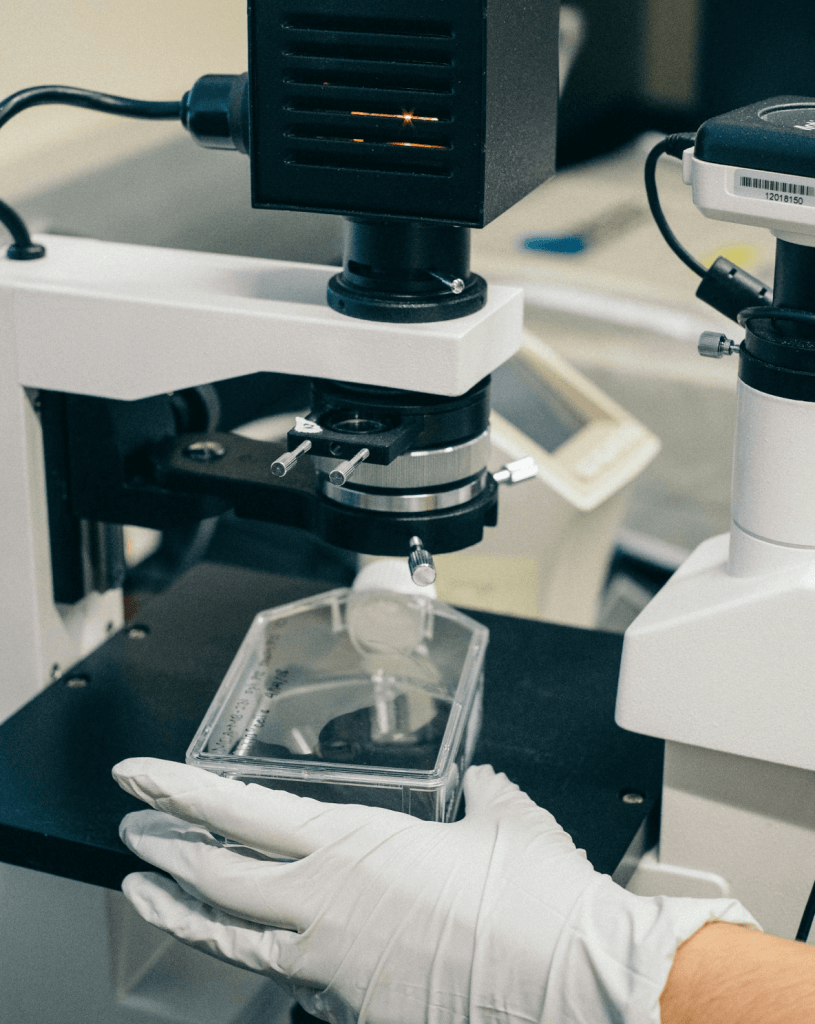Struggling with Curved and Painful Erections?
Learn more about Peyronie’s disease and its symptoms.
Discover the most effective, non-surgical treatments for Peyronie’s disease at Atlanta Men’s Clinic.
What is Peyronie's Disease?
Peyronie’s Disease is a condition where fibrous scar tissue forms inside the penis, leading to a noticeable curve and painful erections. This condition can severely affect sexual function and quality of life.
At Atlanta Men’s Clinic, we offer advanced regenerative treatments like Platelet-rich Plasma and Exosomes to help manage and alleviate these symptoms, ensuring you receive the highest standard of care and support throughout your treatment journey.

What Are The Symptoms of Peyronie's Disease
- Curved Penis: A noticeable curvature of the penis during an erection, which can cause discomfort and affect sexual performance.
- Pain: Painful erections or discomfort during intercourse, making sexual activity difficult or unpleasant.
- Scar Tissue: Lumps or hard areas of tissue under the skin of the penis, which can be felt and may cause the penis to bend.
- Erectile Dysfunction: Difficulty achieving or maintaining an erection, which can impact intimacy and sexual health.
- Shortening of the Penis: A reduction in penis length due to the formation of scar tissue, which can affect self-esteem and sexual confidence.
At Atlanta Men’s Clinic, we pride ourselves on our advanced diagnostic and treatment facilities. Our highly trained professionals specialize in state-of-the-art regenerative therapies like PRP and X-shot (Exosomes) for Peyronie’s disease.
What Are The Causes of Penile Curvature In Peyronie's Disease?
- The exact cause of Peyronie's Disease is not well understood, but it is believed to result from trauma or injury to the penis, genetic factors, autoimmune disease, or infection from STD.
How to Diagnose Peyronie's Disease?
- Diagnosing Peyronie's Disease typically involves a physical examination by a healthcare provider. In some cases, imaging tests such as ultrasound may be used to assess the extent of scar tissue and penile curvature.
Mild and Severe Peyronie's Disease
- Mild Peyronie's Disease:
- Mild Peyronie's Disease is a relatively common, non-cancerous condition that causes the penis to bend or arc during an erection due to scar tissue. It usually does not require medical treatment or cause pain but can affect appearance and sexual activity.
- Severe Peyronie's Disease:
- Severe Peyronie's Disease is a less common, chronic and debilitating condition characterized by significant penile curvature, pain during sexual activity or urination, and difficulty with erections. It can also lead to a decrease in penis length or circumference.
Are There Non-Surgical Treatment Options for Peyronie’s Disease?
Yes, several non-surgical treatment options are available to manage and improve Peyronie’s disease. Non-surgical approaches are particularly appealing for their minimally invasive nature and potential for significant improvement.
At Atlanta Men’s Clinic, we offer the most effective treatment options in modern medicine instead of less effective options like oral and topical medications.
Cellular and Regenerative Therapies for Peyronie’s Disease
- Platelet-Rich Plasma (PRP) Therapy for Peyronie’s Disease
PRP injections utilize your blood, which is processed to concentrate the platelets and then injected into the affected area. This therapy promotes healing, reduces inflammation, and can help in tissue regeneration, thereby reducing curvature and improving penile function.
- Exosome Therapy for Peyronie’s Disease
Exosomes are tiny vesicles that facilitate cell-to-cell communication and play a crucial role in regenerative medicine. Exosome therapy involves injecting these vesicles into the affected area to promote healing and tissue regeneration, offering promising results for Peyronie’s disease.

Discover the Best Regenerative Treatment Options for Peyronie's Disease
At Atlanta Men’s Clinic, we offer advanced non-surgical treatments to effectively manage Peyronie’s Disease. We use top-quality regenerative therapies to provide relief from symptoms without the need for surgery.
Understanding the Risks of Untreated Peyronie's Disease
- Untreated Peyronie's Disease can lead to worsening symptoms, increased curvature, pain, and significant sexual dysfunction.
- The longer the condition is left untreated, the more difficult it can be to manage, leading to permanent changes in penile structure and function. Early intervention can prevent these complications.
Improving Sexual Function with Peyronie's Disease
- Peyronie's Disease can significantly impact sexual function and intimacy. However, various treatments and strategies can help improve sexual function and quality of life despite having Peyronie's Disease. This includes non-surgical treatments, physical therapy, and counseling to address both physical and emotional aspects.
Why Choose Atlanta Men’s Clinic for Peyronie's Disease Treatment?
Experienced Team

Advanced Treatments

Discrete Services

Proven Results

Experienced Team
Our team of experienced healthcare providers specializes in the diagnosis and treatment of Peyronie’s Disease, ensuring you receive the highest standard of care.

Advanced Treatments
We offer cutting-edge, non-surgical treatments including cellular therapy, acellular therapy, and regenerative medicine, tailored to your specific needs.

Discrete Services
We understand the sensitive nature of Peyronie’s Disease and ensure complete confidentiality and discretion throughout your treatment journey.

Proven Results
Our advanced therapies have helped numerous men manage and improve their Peyronie’s Disease symptoms, enhancing their quality of life and sexual health.
Don’t let Peyronie's Disease control your life.
Take Control of Your Health with Atlanta Men’s Clinic
Atlanta Men’s Clinic specializes in providing advanced, non-surgical treatments to help you manage and overcome Peyronie’s Disease. Our dedicated team is here to support you every step of the way with personalized care and proven results.
Meet Our team

Dr. Juan Pablo Nieto MD
Sports Medicine and Chronic Joint Pain Specialist

Alyssa Shaffer
FNP-C
Men’s and Women’s Health Specialist

Nikki Newell
Registered Nurse and Registered Health Information Administrator

Diana Reeder
Practice Manager and Healthcare Administrator
Real Transformations, Real Results
"They make you feel like home! And most importantly, my life had changed 180 degrees after I started the treatment !! I Highly recommend Atlanta Men's Clinic."
"From the moment I walked in, I felt comfortable. They took the time to listen and offered real solutions for ED. The staff was incredibly supportive throughout the entire process, making it a stress-free experience. Can't recommend them enough!"
"Truly amazed by my transformation! I've got more energy and a newfound sense of clarity. They worked with me every step of the way, providing tailored options that have completely changed my life. Very grateful for their expertise and support."
"Absolutely happy with my results so far! From the beginning, I noticed a significant boost in energy levels and overall health. Their personalized approach tailored specifically to me has made all the difference. Thank you Atlanta Men's Clinic."
“Atlanta Men’s Clinic is the best thing that has ever happened to me. Within a day of getting my first shot, it was like an extra 50lbs of gravity had left my body."
Questions? We Have Answers.
Explore our FAQ section for quick answers to common questions about Peyronie’s Disease, and the advanced regenerative therapies offered at Atlanta Men’s Clinic. The journey to a better you begins here.
Can lifestyle changes help to manage Peyronie's Disease?
- Yes, while lifestyle changes alone can’t cure Peyronie's Disease, maintaining a healthy diet, regular exercise, and managing stress can support overall health and potentially alleviate some symptoms.
How long does it take to see improvements with non-surgical treatments?
- With our regenerative therapies, results are visible within the first few weeks.
Can Peyronie's Disease recur after treatment?
- Yes, Peyronie's Disease can recur even after treatment, so we recommend ongoing monitoring.
Are there any side effects to non-surgical treatments for Peyronie's Disease?
- Non-surgical treatments like cellular therapy, acellular therapy, and regenerative medicine generally have minimal side effects compared to surgical options.
Is Peyronie's Disease linked to other health conditions?
- Yes, Peyronie's Disease can be associated with other health conditions such as diabetes, high blood pressure, and Dupuytren's contracture.
Can Peyronie's Disease affect mental health?
- Yes, Peyronie's Disease can significantly impact mental health, leading to issues such as depression, anxiety, and decreased self-esteem.
Does Peyronie's Disease cause erectile dysfunction (ED)?
- Yes, Peyronie's Disease can cause erectile dysfunction. The curvature and pain associated with Peyronie's can make achieving and maintaining an erection difficult.
Can Peyronie's Disease be treated without surgery?
- Yes, there are non-surgical treatments available such as cellular therapy, acellular therapy, and regenerative medicine, which can be effective in managing and treating Peyronie's Disease.


